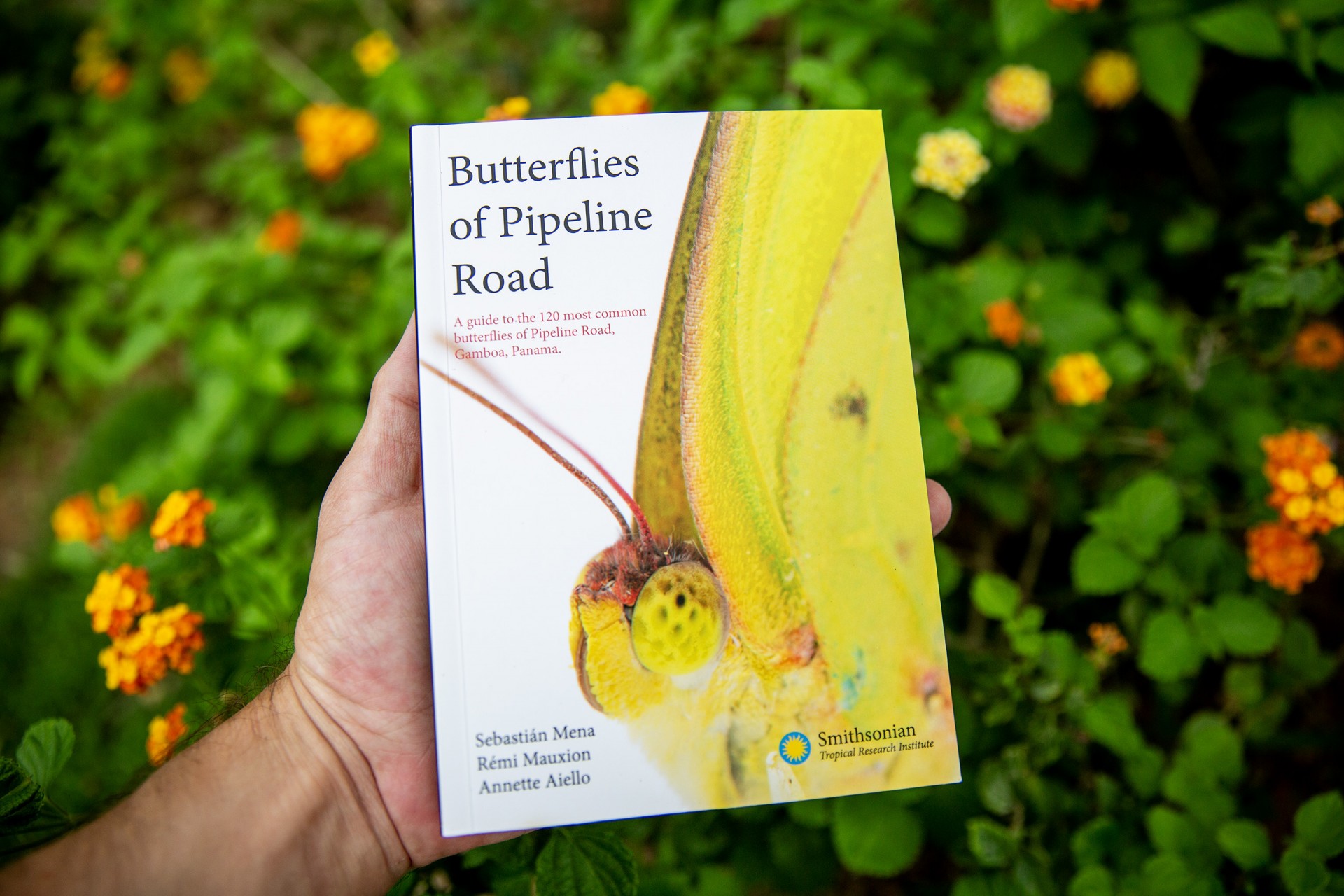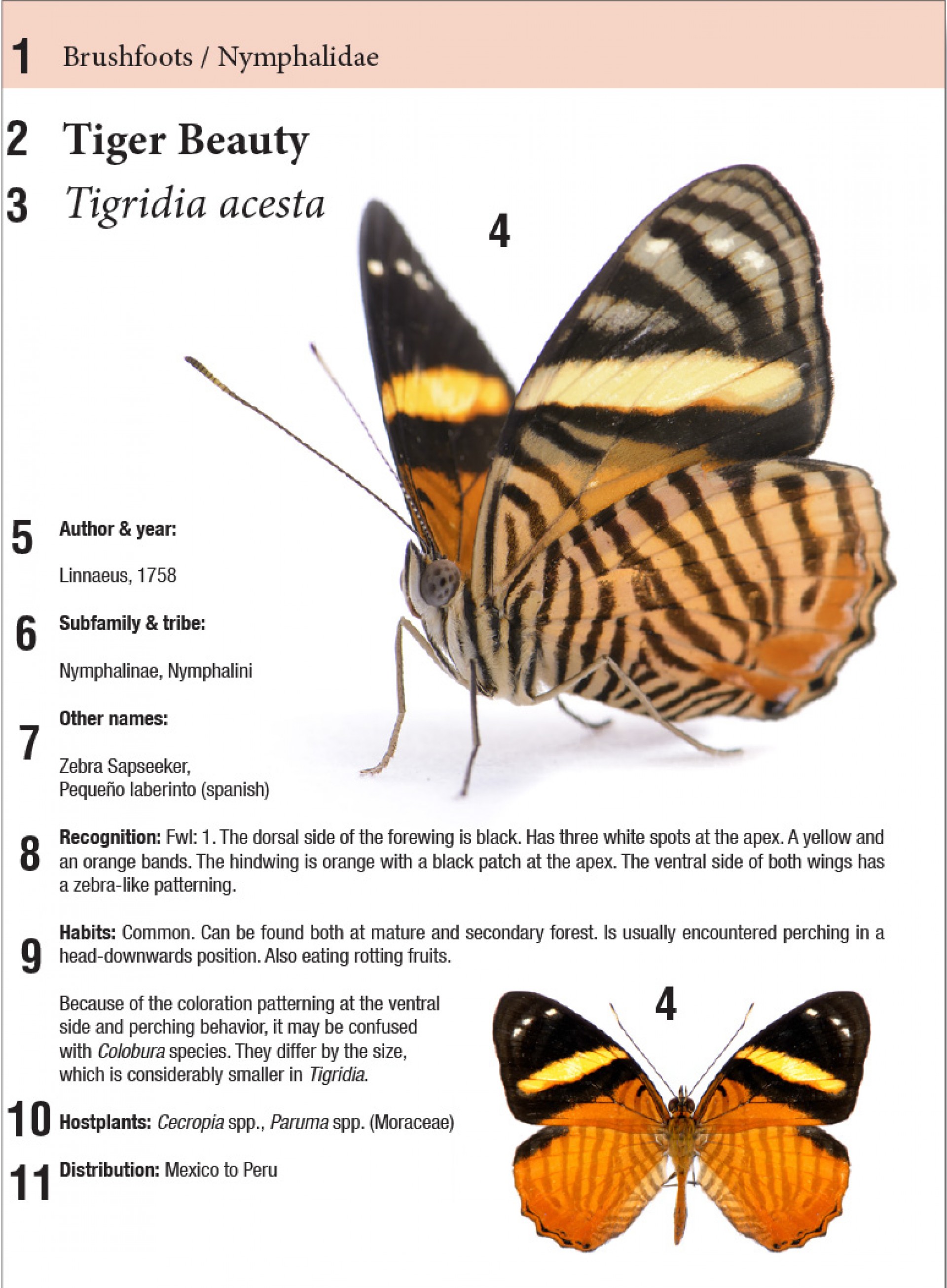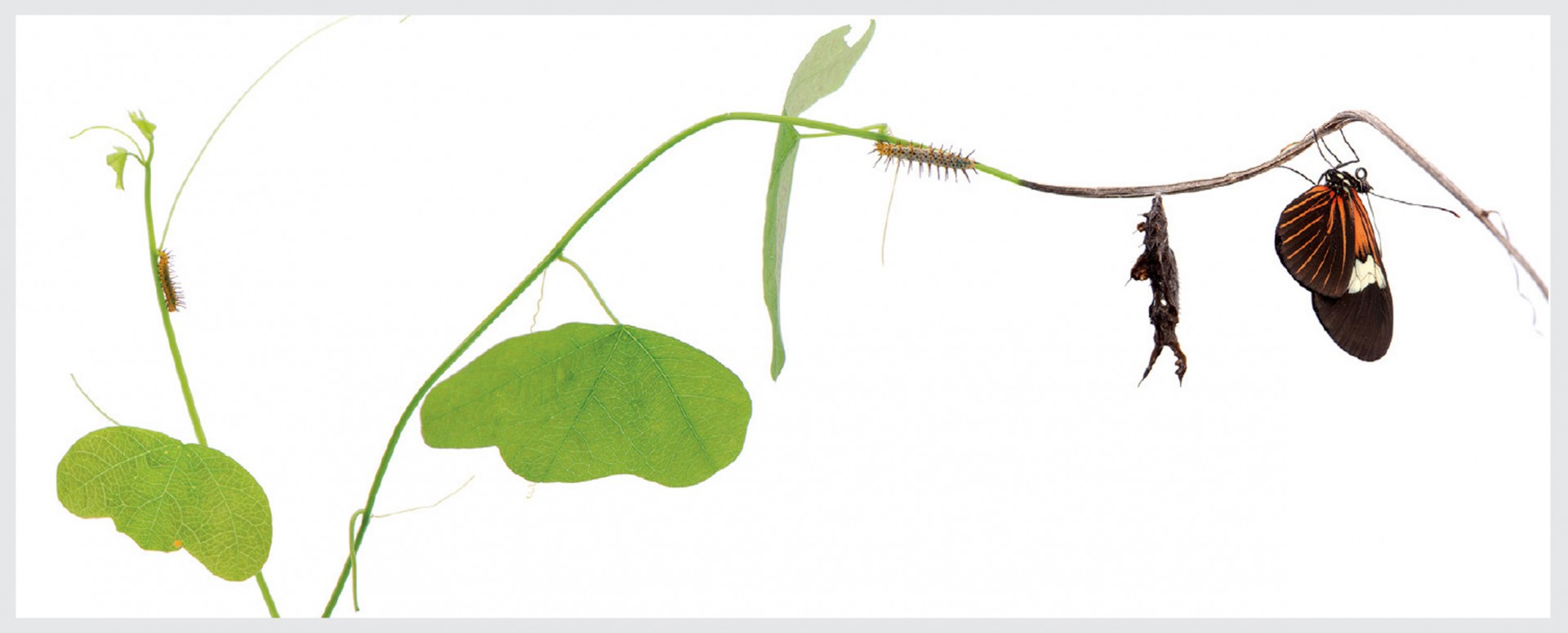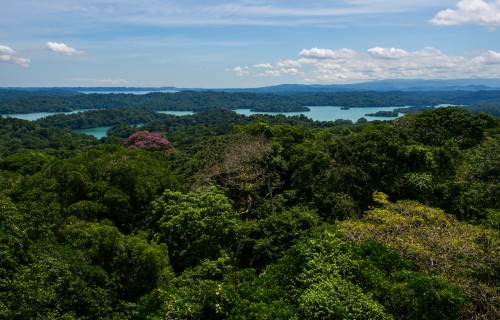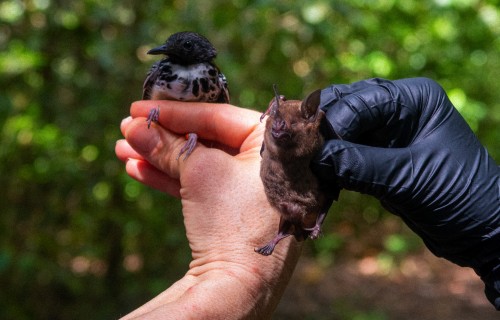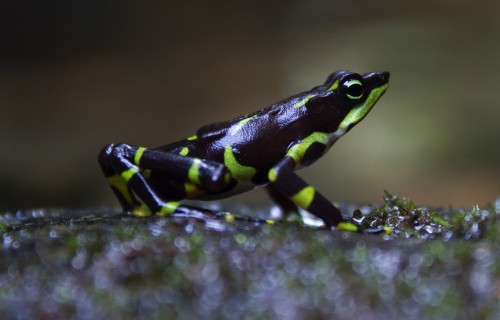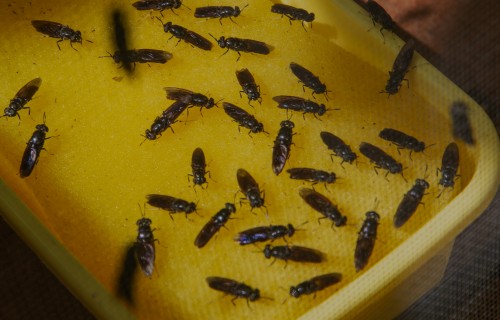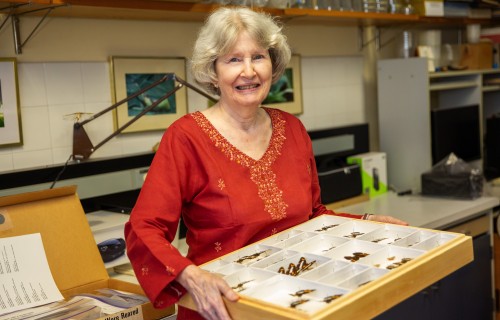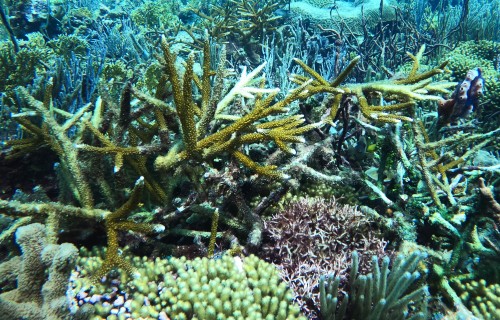For the first time since records began,
the cold, nutrient-rich waters of the
Gulf of Panama failed to emerge
Let’s go
Butterfly
watching!
Butterflies of Pipeline Road:
the new book that will make
you fall for the butterflies
of Panama
By: Rosannette Quesada-Hidalgo
Butterflies of Pipeline Road is a concise and colorful field guide that brings together 120 of the most commonly observed butterflies from one of the most biodiverse trails in Panama: Pipeline Road.
Butterfly watching has been gaining popularity in recent years. Proof of this is the recent launch of the e-butterfly app to record the species of butterflies seen in a location and even notes on their natural history. However, to complement the digital identification of organisms, field guides serve as the perfect companion. Having taxonomically organized printed images of the existing diversity, where you can compare different species, is truly useful, especially if the images come with information on important aspects of their natural history and distribution.
Butterflies of Pipeline Road is the most recently published field guide by the Smithsonian Tropical Research Institute (STRI). It includes 120 of the most common butterfly species of Pipeline Road, the town of Gamboa and the Panama Canal Railway tracks. Pipeline Road, located within Panama’s Soberanía National Park was originally built to install a pipeline for petroleum during World War II, is a world-famous destination to observe birds and wildlife and for scientific research.
Dido Longwing (Philaethria dido) and Malaquite (Siproeta stelenes) are very similar butterflies during their adult stage, but they are different species.
Credit: Butterflies of Pipeline Road Book
Butterflies of Pipeline Road book cover.
Credit: Jorge Alemán
The talented authors of the guide, former STRI intern Sebastián Mena, former STRI fellow Rémi Mauxion, and STRI staff scientist Annette Aiello, include a very useful introduction to butterflies, their anatomy, their lifecycle and host plant co-evolution. The guide also includes visually attractive images of the adult butterflies and valuable information on their habits, host plants and distribution. For some species, a very useful illustration of the caterpillar, the pupa and, in some cases, the host plant are included. This information is very valuable as some very similar adults can be distinguished by their immature stages.
Diagram of how to use the Butterfly of Pipeline Road book, as each plate inside the book includes relevant information for each species.
Credit: Butterflies of Pipeline Road book
This guide is the perfect size to bring to the field and has the scientific name as well as the common name for all species, which are organized and color-coded by families, flawlessly engaging students, scientists and nature-lovers in the adventure of butterfly watching. It also features some tips for butterfly watching: bring binoculars, as some butterflies will fly away quickly, look for the host plants and check them for eggs and caterpillars, check different environments as butterflies can be found in a variety of habitats at different times of the day and finally, take pictures and bring a notebook, as interesting things can be found by observing these unique insects!
Erato Longwing (Heliconius erato) life cycle showing its egg, caterpillar, pupa, and adult stages.
Credit: Butterflies of Pipeline Road book
The book is available at STRI’s bookstore, located at Earl S. Tupper Building on Roosevelt Avenue in Ancón, Panama City. The store is open Tuesdays and Thursdays from 1:00 pm to 2:00 pm. Also, you can bring your copy to the new LepiDome at Punta Culebra Nature Center and practice identifying some of the butterflies. Panama offers unique opportunities to observe butterflies, so let’s grab the guide and go butterfly watching!


